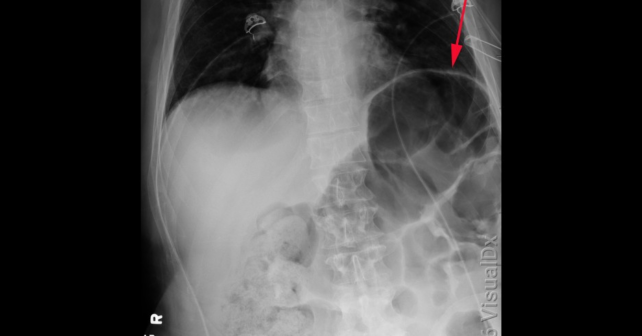
Answer: The correct answer is d) large bowel obstruction.
Explore This Issue
ACEP Now: April Digital 02-DLarge bowel obstructions may be partial or complete. Patients present with severe abdominal distension and inability to pass stool or flatus. Patients presenting secondary to colorectal malignancy often have a history of alternating diarrhea and constipation over the preceding weeks to months and may have had bleeding per rectum. A change in stool caliber and/or weight loss may be present and suggest malignancy is the cause of the LBO. Left lower quadrant pain can be suggestive of diverticular disease. Sigmoid volvulus is more common in older patients, those on a high-fiber diet, those with a history of chronic constipation, and long-term care facility residents. Cecal volvulus differs in that it occurs most commonly in patients between the ages of 30 and 60 years and in those with a pelvic mass, prior abdominal surgery, and in the third trimester of pregnancy.
See the original question here.
Source: Visualdx.com



One Response to “Visual Dx Answer: c) Large Bowel Obstruction”
April 14, 2025
Janardan Tallamit is important to differentiate between caecalv/s sigmoid volvulas In advsnced large bowl obstruction It is differentiate between caecal or sigmoid volvulas Surgeons wants to know the type of obstruction Radiolodists helps to identify type